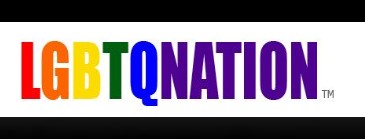New LGBT Friendly Legislation Introduced In Nebraska As State's Main University Offers Same-Sex Health Care Benefits
By Chris Dyer | LINCOLN, Neb. — As the 2013 legislative session in Nebraska commenced last week with three LGBT-friendly bills introduced for debate, the University of Nebraska announced it plans to offer health care benefits for the university’s partnered same-sex and opposite-sex couples.
In the legislature, state Sen. Sarah Howard (D-Omaha), introduced state bill LB 380, a measure that would lift a ban that prohibits same-sex couples from becoming adoptive parents; Sen. Jeremy Nordquist (D-Omaha) introduced state bill LB 385, which would allow same-sex couples to become foster parents via the Nebraska Department of Health and Human Services.
A third measure (LB 485), introduced by Sen. Danielle Conrad (D-Lincoln), would extend protections to people based on sexual orientation under the state’s non-discrimination law.
Conrad told LGBTQ Nation that she believes that the time has come to try and pass this bill. The last time a similar measure bill was introduced in 2007 and failed to gain passage in a floor vote.
Conrad’s bill does not extend protections based on gender identity.
The bills have been referred to the Judiciary Committee; Nebraska’s GOP Governor Dave Heineman has not indicated whether he supports the bills, or if he would sign them into law if passed.
Also last week, the University of Nebraska-Lincoln reported that 71 people had signed up for the “PlusOne” employee benefit program, which extends insurance benefits to same-sex and opposite-sex partners who share the employee’s household and with whom the employee is financially interdependent.
Family coverage extends to the partner’s dependent children. Benefits include health, dental and vision insurance, sick and bereavement leave and eligibility for the Dependent Scholarship Program.
University spokeswomen Melissa Lee noted that adopting the “PlusOne” program would bring the university in line with the practices of comparable higher education institutions.
Nationally, more than 300 higher education institutions offer partner benefits, including public universities and systems in at least 30 states and most of the highly ranked research institutions, according to Lee.
In the legislature, state Sen. Sarah Howard (D-Omaha), introduced state bill LB 380, a measure that would lift a ban that prohibits same-sex couples from becoming adoptive parents; Sen. Jeremy Nordquist (D-Omaha) introduced state bill LB 385, which would allow same-sex couples to become foster parents via the Nebraska Department of Health and Human Services.
A third measure (LB 485), introduced by Sen. Danielle Conrad (D-Lincoln), would extend protections to people based on sexual orientation under the state’s non-discrimination law.
Conrad told LGBTQ Nation that she believes that the time has come to try and pass this bill. The last time a similar measure bill was introduced in 2007 and failed to gain passage in a floor vote.
Conrad’s bill does not extend protections based on gender identity.
The bills have been referred to the Judiciary Committee; Nebraska’s GOP Governor Dave Heineman has not indicated whether he supports the bills, or if he would sign them into law if passed.
Also last week, the University of Nebraska-Lincoln reported that 71 people had signed up for the “PlusOne” employee benefit program, which extends insurance benefits to same-sex and opposite-sex partners who share the employee’s household and with whom the employee is financially interdependent.
Family coverage extends to the partner’s dependent children. Benefits include health, dental and vision insurance, sick and bereavement leave and eligibility for the Dependent Scholarship Program.
University spokeswomen Melissa Lee noted that adopting the “PlusOne” program would bring the university in line with the practices of comparable higher education institutions.
Nationally, more than 300 higher education institutions offer partner benefits, including public universities and systems in at least 30 states and most of the highly ranked research institutions, according to Lee.






















0 comments:
Post a Comment